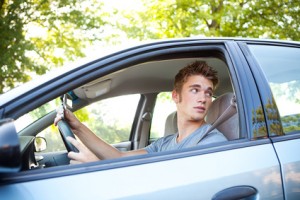
The term “distracted driving” is usually associated with texting and mobile phone use, but modern teen drivers encounter a wide variety of high-tech diversions. While many parents discuss the dangers of driving and cell phone use with their teenage children, it’s important to consider the other ways teens are distracted while driving.
Here are some of the most dangerous driving-related activities teens should avoid when they are behind the wheel:
* Speech-to-Text Systems: A speech-to-text system gives drivers the ability to send texts and emails by simply speaking. In-dash units incorporate technology to translate the words into written text. Some models allow users to update their Facebook page while driving. The increased mental workload causes cognitive distractions and tunnel vision, which can degrade the driver’s ability to see and process potential threats.
* Car Stereos: Modern car stereos offer a variety of entertainment options including AM, FM, subscription services, DVDs and smartphone integration. The sound can also be fine tuned through a variety of setting options. Adjusting stations or manually changing screens and EQ settings require total focus and should always be avoided when driving.
* GPS Devices: Unfamiliar roads can be confusing and dangerous, and many people find a GPS is helpful in navigating to a specific destination. However, a GPS requires the same kind of detailed input as texting, so the unit’s address functions should never used until the vehicle is stationary.
* Passengers: Teenagers are often high-energy people, and they can create a significant driving distraction, especially if there is more than one passenger. In fact, the NHTSA estimates that nearly 7,000 accidents last year were caused by passenger-related issues. Many parents restrict the number of passengers allowed in their vehicle until the child has been driving solo for at least a year.
* Eating and Drinking: Insurance company studies indicate that eating and drinking while driving is as distracting as mobile phone use. Food is messy, and the natural reaction to spilling something is to look down and clean it up. In these circumstances, it’s very easy to unintentionally swerve and create a hazard.
* SmartPhone: Smartphones are miniature computers, and texting represents only one of the potential driving hazards the device may create. Streaming services provide audio and video that is displayed directly on the screen. Smartphones have built-in GPS capabilities, onboard personal assistants and other advanced functions designed for stationary use. In general, turning off a smartphone before stepping into the vehicle significantly reduces the likelihood of being involved in an accident.
Keep Your Teenager Safe
There are many other forms of distracted driving including personal grooming, reading and searching through the vehicle for a lost item. Before your teenager gets behind the wheel, make sure they understand the importance of eliminating all distractions and concentrating exclusively on the critical task of driving.
For more information visit:
https://impactteendrivers.org
https://www.ksat.com/news/new-driving-course-shows-teens-dangers-of-distracted-driving
https://teensagainstdistracteddriving.com/blog/
https://www.cnn.com/2014/01/23/living/teens-driving-texting-drinking-parents/
https://www.teendriversource.org/more_pages/page/car_accident_prevention/teen
